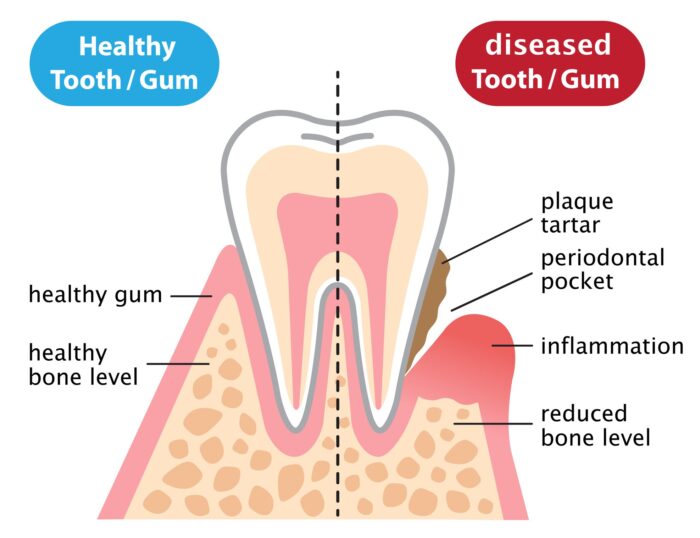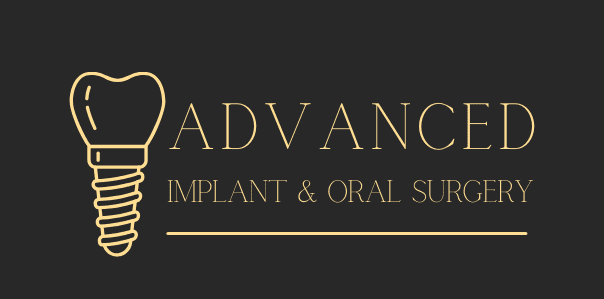Dr. Bradley Dean is a leading Plano area dentist for oral surgery and implant dentistry. His advanced training in periodontics provides the foundation for comprehensive care that can restore the health and function of your smile. Dr. Dean offers surgical treatment options to address complex dental problems related to the health of the gums.
During your consultation, Dr. Dean will use advanced digital imagery to evaluate the condition of the teeth, gums, and underlying bone and soft tissues. In some cases, bone grafting may also be recommended to fully restore the stability of your oral health.

Osseous Surgery in Plano, TX
In some cases, when the gum pocket does not respond to other procedures such as scaling and root planing, osseous surgery may be needed to reduce the pocket depth and prevent the future build-up of plaque and bacteria.
Sometimes called gum pocket surgery or gingivectomy, osseous surgery involves smoothing and reshaping the affected bone and reducing the gum pocket, making it difficult for bacteria to survive. It will eliminate bacteria and infection, stop decay, and prevent further damage.
It’s a fairly simple procedure that Dr. Dean can perform right in our office.
Step 1: Preparation and Evaluation
Before the procedure, Dr. Dean will examine your gums and take X-rays to assess the extent of the damage. He will measure the depth of the gum pockets to determine if osseous surgery is necessary. Surgery may be the best option if the pockets are too deep for regular cleanings or scaling and root planing to be effective.
On the day of the procedure, we’ll numb the area with a local anesthetic to ensure you don’t feel pain. In some cases, we also offer sedation to help you relax.
Step 2: Opening the Gums
Once the area is numb, Dr. Dean makes small incisions in the gums to lift them away from the teeth. This allows him to see and clean the infected areas beneath the gumline.
Step 3: Removing Bacteria and Damaged Tissue
Next, he removes plaque, tartar, and infected gum tissue around the teeth and root surfaces. He may also use special tools to remove bacteria built up deep within the pockets, which helps stop the infection from spreading further.
Step 4: Reshaping the Bone
If gum disease has caused bone loss, Dr. Dean will smooth and reshape the damaged bone. Uneven or rough bone surfaces can trap bacteria, making it harder for gums to heal properly. By reshaping the bone, he creates a healthier foundation for the gums to reattach. Sometimes, we may use bone grafts to help rebuild lost bone.
Step 5: Closing the Gums
After cleaning and reshaping the bone, Dr. Dean repositions the gums over the teeth and stitches them back into place. These stitches help the gums heal properly and reduce the size of the pockets around the teeth. Sometimes, a special dressing is placed over the area to protect it during healing.
After Your Surgery
Immediately after your surgery, you can return to your regular daily activities. It may take a few days or weeks for your gums to completely heal. It is also important to know that the shape of your gums may change. While most people only report minor discomfort, you can take over-the-counter pain medications to help you find some relief.
We recommend a soft diet for several days after your osseous surgery. You should continue with a normal oral hygiene routine. You will notice that it is easier to care for your teeth now. For further instruction, Dr. Dean will provide personalized post-treatment instructions on a patient-by-patient basis.
While this surgical procedure will help keep gum disease from damaging your gums further, it is important to take additional steps. You must maintain a strict daily oral hygiene routine to keep your teeth and gums healthy. If you smoke or use tobacco, you should consider quitting. This will benefit your oral and overall health. It is also very important to visit your dentist every six months for regular checkups.
The Benefits of Osseous Surgery
This procedure provides many benefits that can improve both oral and overall health.
Stops the Progression of Gum Disease
One of the biggest benefits of osseous surgery is that it stops gum disease from worsening. Advanced gum disease, also known as periodontitis, destroys the bone and tissues that support the teeth. By removing infected tissue and bacteria, osseous surgery helps prevent further damage. This keeps the gums healthier and reduces the risk of future infections.
Reduces Deep Gum Pockets
When gum disease reaches an advanced stage, the gums pull away from the teeth, creating deep pockets. These pockets collect bacteria, plaque, and tartar, making the infection worse. Regular brushing and flossing cannot effectively clean these areas. Osseous surgery reduces the size of these pockets, making it easier to maintain proper oral hygiene and prevent reinfection.
Prevents Tooth Loss
Severe gum disease is one of the leading causes of tooth loss. As bacteria destroy the bone that holds the teeth in place, teeth can become loose and eventually fall out. Osseous surgery, by reshaping the bone and removing infection, helps stabilize the teeth and prevent them from shifting or becoming loose. This helps patients keep their natural teeth longer.
Improves Gum Health and Appearance
Gum disease can cause red, swollen, and bleeding gums, making the mouth look unhealthy. After osseous surgery, the gums heal and become firmer and healthier. This improves not only oral health but also the appearance of the smile. Healthy gums also help support the teeth properly, improving overall dental function.
Enhances Overall Health
Gum disease is linked to several serious health conditions, including heart disease, diabetes, and respiratory infections. The bacteria from infected gums can enter the bloodstream and spread to other body parts, increasing the risk of health problems. By treating gum disease with osseous surgery, patients can reduce inflammation and lower their risk of these complications.
Provides Long-Term Oral Health Benefits
Osseous surgery is a long-term solution for patients with advanced gum disease. While good oral hygiene and regular dental visits help maintain gum health, osseous surgery provides a deeper cleaning and reshapes the bone to prevent future problems. This procedure helps keep the gums and teeth healthy for years when combined with proper dental care.
Osseous Surgery FAQs
Do you have further questions about osseous surgery? Continue reading to learn more and find answers to frequently asked questions in our office.
What should you avoid after osseous surgery?
Avoid foods and beverages that are extremely hot, cold, acidic, spicy, or sour. Patients should also avoid things that might become stuck between their teeth, such as nuts, chips, and other hard foods. For at least 48 hours after surgery, refrain from using a straw, smoking, or consuming carbonated or alcoholic beverages.
How long does it take to recover from osseous surgery?
Depending on the extent of the osseous surgery, the overall recuperation period will be around a month. To prevent further damage and aid in the healing of your mouth, it often takes two weeks before you can consume anything other than soft foods.
How long does bleeding last after osseous surgery?
Bleeding is typical in the first 24-48 hours after your osseous surgical procedure. You may reduce bleeding by biting on a gauze pad applied directly to the incision for 30 minutes. This will help aid in clotting.
How painful is osseous surgery?
The procedure for osseous surgery should not be painful, as an anesthetic is used to numb the patient’s nerves. After the anesthetic wears off, patients may experience tender pain and sensitivity. However, you can regulate this with an OTC pain reliever.
Can osseous surgery cure gum disease?
Osseous surgery can significantly improve the status of periodontal disease; however, it cannot completely cure it. The goal of osseous surgery is to stop the progression of gum disease, but it will not reverse it entirely.
How do you clean your teeth after osseous surgery?
After osseous surgery, it is important to avoid brushing the area while it heals. Patients may rinse the area to clean it. We recommend avoiding chewing around the area so there is little chance of it gathering plaque and bacteria.
